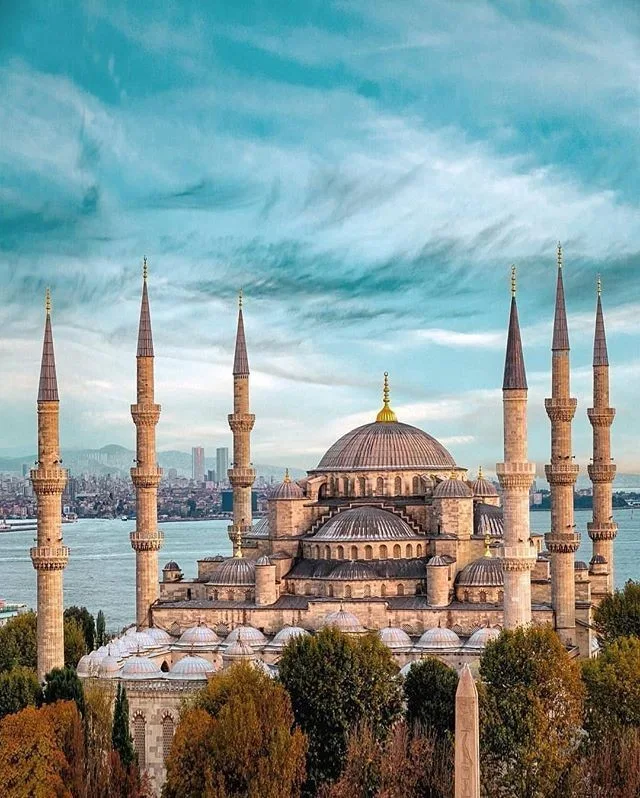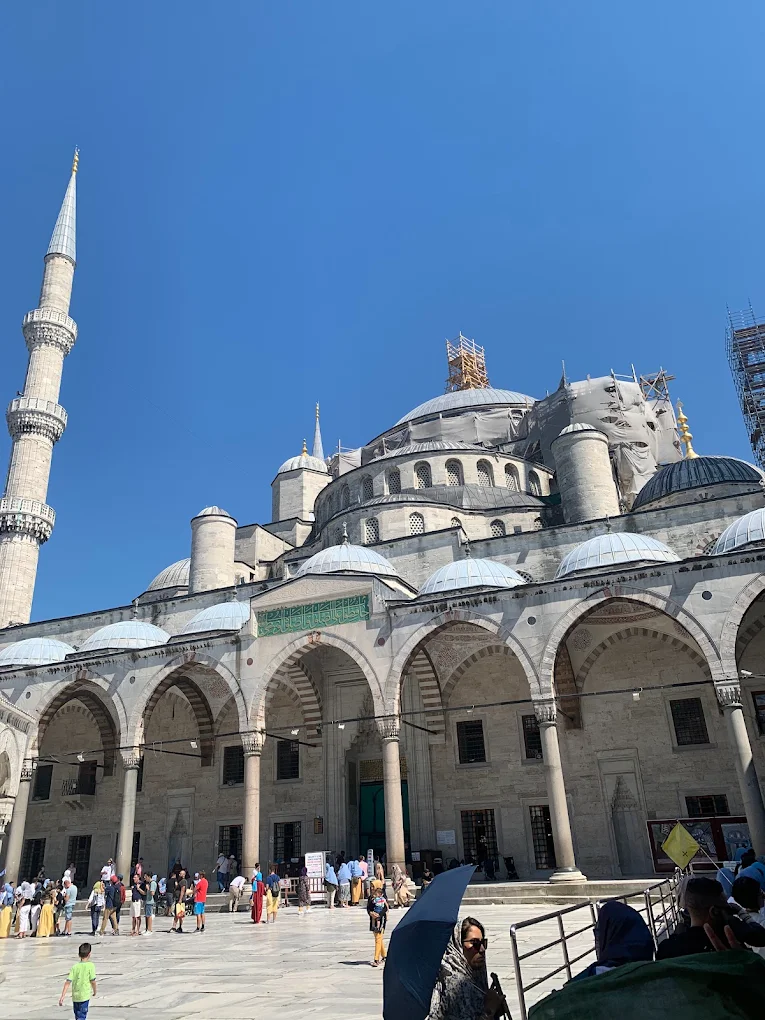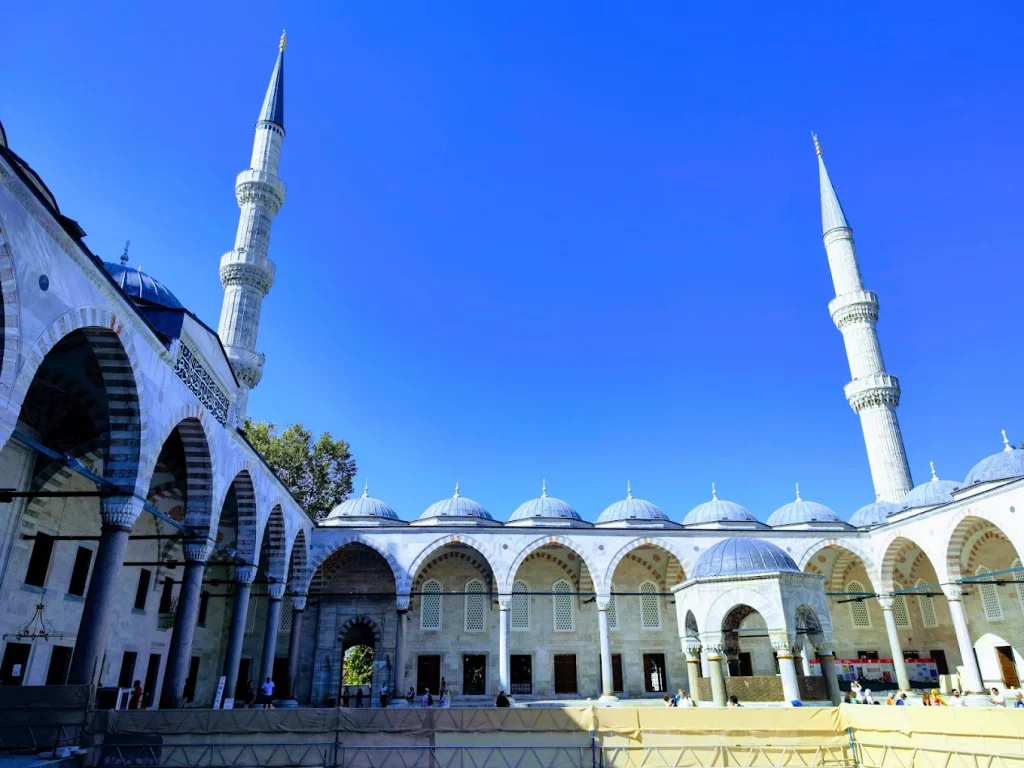The Blue Mosque Istanbul: History, Significance, and How to Visit
Discover the Blue Mosque in Istanbul, one of Turkey’s most iconic landmarks. Learn its history, architecture, why it is so important, and how to reach this masterpiece of Ottoman heritage.
The Timeless Symbol of Istanbul
The Blue Mosque Istanbul, also known as the Sultan Ahmed Mosque, is one of the most breathtaking landmarks in Turkey. Famous for its six elegant minarets, cascading domes, and over 20,000 blue İznik tiles that decorate its interior, this mosque has become a symbol of the city’s spiritual and cultural identity. Every year, millions of visitors from around the world step inside its gates, eager to witness the harmony of history, faith, and architecture that defines Istanbul.
When Was the Blue Mosque Built?
The Blue Mosque was commissioned by Sultan Ahmed I in the early 17th century. Construction began in 1609 and was completed in 1616. At the time, the young Sultan wanted to assert the grandeur of the Ottoman Empire by building a mosque that rivaled the nearby Hagia Sophia, which had stood as a Byzantine masterpiece for centuries.
This project became Ahmed I’s legacy, as he died only a year after its completion. His tomb still lies within the mosque complex, making the Blue Mosque not just a place of worship but also a resting place for its visionary patron.
Who Built the Blue Mosque?
The Blue Mosque was designed by Sedefkar Mehmed Agha, a chief architect and disciple of the legendary Mimar Sinan. Mehmed Agha combined the grandeur of Byzantine structures like Hagia Sophia with classical Ottoman mosque design. His vision was to create a perfect balance between spirituality and aesthetic splendor.
Using İznik tiles in thousands of shades of blue, calligraphy from the Qur’an, and detailed marble work, the architect successfully delivered one of the most beautiful mosques in the Islamic world.
Why Is the Blue Mosque So Important?
1. Religious Significance
The mosque continues to function as an active place of worship, holding five daily prayers. It remains one of the most important religious centers in Istanbul and is often filled with both locals and tourists alike.
2. Cultural Heritage
Recognized worldwide, the Blue Mosque Istanbul has been added to the UNESCO World Heritage Site list as part of Istanbul’s historic areas. It is an enduring reminder of the Ottoman Empire’s power and artistry.
3. Architectural Brilliance
From its six minarets to the cascading domes and hand-painted İznik tiles, the mosque showcases the height of Ottoman design. The harmony between its size, detail, and artistry sets it apart from other mosques worldwide.
The Architecture of the Blue Mosque
Exterior Features
- Six minarets, an unusual number at the time, symbolizing its grandeur.
- A large central dome surrounded by smaller domes, creating a layered, cascading effect.
- Courtyards as large as the mosque itself, offering space for thousands of worshippers.
Interior Features
- Over 20,000 handmade İznik tiles in various shades of blue, giving the mosque its name.
- Massive stained-glass windows that allow natural light to illuminate the prayer hall.
- A mihrab (prayer niche) carved from fine marble.
- Intricate Arabic calligraphy with verses from the Qur’an decorating the walls.
How to Reach the Blue Mosque in Istanbul
Reaching the Blue Mosque is simple, thanks to its central location in the Sultanahmet district, the historic heart of Istanbul.
- By Tram: Take the T1 tram line to the Sultanahmet stop. The mosque is just a short walk away.
- By Metro: From other parts of the city, take the M2 metro line and transfer to the tram at Vezneciler or Aksaray.
- By Ferry: Visitors staying on the Asian side can take a ferry to Eminönü or Karaköy and then connect to the tram.
- On Foot: If you are already visiting nearby attractions like Hagia Sophia, Topkapı Palace, or the Grand Bazaar, the Blue Mosque is within walking distance.
For most tourists, the easiest way is by tram to Sultanahmet, which also gives access to Istanbul’s main attractions.
Visiting the Blue Mosque: What to Expect
- Entry Fee: Free of charge, as it is a functioning mosque.
- Opening Hours: Open daily except during prayer times (five times a day).
- Dress Code: Visitors must dress modestly. Women should cover their hair with a scarf, and both men and women should wear clothing that covers shoulders and knees.
- Shoes: All visitors must remove their shoes before entering. Plastic bags are provided to carry them.
- Photography: Allowed, but flash photography and loud behavior are discouraged.
The Blue Mosque vs. Hagia Sophia
Visitors often compare the Blue Mosque with Hagia Sophia, which is located just across Sultanahmet Square. While Hagia Sophia represents Byzantine Christian architecture, the Blue Mosque symbolizes the height of Ottoman Islamic design. Together, they form a powerful historical and cultural dialogue that makes Istanbul unique in the world.
Why Do People Say “Yes” to Visiting the Blue Mosque?
Tourists from around the world often describe the Blue Mosque as a “must-see” attraction. Its beauty, free entry, and spiritual atmosphere make it irresistible. Visitors say “yes” to experiencing the Blue Mosque because:
- It offers a glimpse into Ottoman history.
- Its architecture is unlike any other mosque.
- It is conveniently located among Istanbul’s top attractions.
- The peaceful prayer hall provides a serene escape from the city’s busy streets.
Best Time to Visit the Blue Mosque
- Morning: Fewer crowds, better light for photography.
- Evening: The mosque glows beautifully under illumination.
- Ramadan: The mosque becomes especially lively, with night prayers and community events.
Avoid visiting during Friday midday prayers, when the mosque is most crowded with worshippers.
Tips for Tourists
- Combine your visit with Hagia Sophia and Topkapı Palace for a full historic day.
- Dress modestly and bring a scarf if you are a woman.
- Be mindful of prayer times when planning your visit.
- Hire a local guide to better understand the mosque’s symbolism and history.
- Take time to explore the courtyard, which offers excellent photo opportunities.
A Timeless Icon of Istanbul
The Blue Mosque Istanbul is more than just an architectural wonder—it is a living monument to the Ottoman Empire, Islamic art, and Turkish history. From its six minarets to the dazzling blue İznik tiles, it continues to impress visitors from across the globe.
Whether you are in Istanbul for a day or a week, saying “yes” to the Blue Mosque is saying yes to the city’s soul. Its history, beauty, and spiritual atmosphere make it a site that every traveler should experience at least once in their lifetime.



